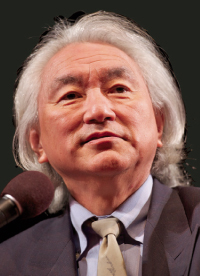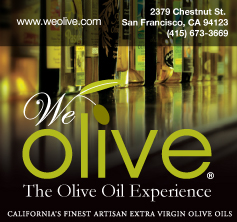
Michio Kaku describes the laws of physics
that will determine our future photos: Ed Ritger
that will determine our future photos: Ed Ritger
The very busy Kaku is professor of theoretical physics at CUNY and the co-founder of string field theory. He has authored many books, including the current bestseller Physics of the Future; he hosts two weekly radio programs and has hosted numerous science television series; and he frequently appears on national news programs to share his expertise on scientific matters, most recently on the Japanese nuclear crisis.
But he’s from the Bay Area, so the temptation is irresistible to ask about his former home. In Kaku’s youth, the Peninsula was a lot less dense, and he fondly recalled the alfalfa fields, which were “this high,” he said, holding his hand three feet off the floor, “and I was this high,” he added, lowering his hand half a foot.
Kaku was born in San Jose and grew up on the Peninsula, where he attended Palo Alto’s Cubberley High School. He recalled enlisting his parents to help him coil 22 miles of copper wire on the grounds of Cubberley’s football field, just yards from where he gave his Commonwealth Club speech in early March.
Before he headed onstage to address the audience, he agreed to talk to Northside San Francisco about the future of the Bay Area, for which, he has good and bad news.
First, the bad news. We can blame Moore’s Law for what will come. Named for Intel co-founder Gordon Moore, this law predicts that the number of transistors that can be put on an integrated circuit doubles every two years. This results in rapidly expanding computer power, and that fuels the growth of computer applications, hardware sales, entire new industries, and uses. “We were blessed with the rise of silicon,” said Kaku. “But I’m a physicist. I know that silicon power cannot last forever. Sooner or later we’re going to enter the post-silicon era, and it’s not clear who will pick up the mantle of Silicon Valley. But whoever does will reign supreme in the 21st century.”
He says that Moore’s Law, which governed the high-tech world for decades, “is already beginning to slow down a bit, and by 2020, Moore’s Law will flatten out. That could cause a depression in Silicon Valley. Silicon Valley could become a rust belt, unless we take measures very soon.”
The collapse of Moore’s Law isn’t the result of congressional dysfunction. It’s the result of a higher power: the laws of physics. “Transistors are getting so small, so powerful, they get hot,” said Kaku. “So hot they melt. You could fry an egg on a chip of the future. Plus [because] they get smaller, they leak, because of the Heisenberg Uncertainty Principle. So ultimately silicon power will collapse.”
He identified some possible replacements for silicon, including DNA computers, quantum computers, molecular computers, and optical computers. “But none of them are ready to pick up the mantel of silicon,” he noted. “So it’s something to worry about, the fact that silicon power may be exhausted in the coming decades.”
Now for the good news. The pace of change that turned sleepy, weed-filled Silicon Valley into, well, Silicon Valley, will only increase in the future, and that opens up nearly endless possibilities for more creativity and more industries. Characteristically, Kaku points to the past to make a point about the future.
“Let’s say you were to meet your great grandparents of 1900. They lived in a time when the average life expectancy was in the 40s,” Kaku said. “Back then, long-distance communication was yelling, and long-distance travel was a horse, if you were rich, or a donkey. That’s life in 1900.”
How would they view you today with your use of GPS, satellites, nuclear power, iPhones and airplanes?
“They would view you as a wizard, a sorcerer, able to create images and go great distances,” he says. “Now let’s say you meet your great grandkids of 2100. How would you view them, given that technology accelerates? It doesn’t slow down at all; it accelerates over time. We would view them as gods. The gods of mythology.
“Zeus could think about things and materialize things, think about ideas and – boom – they would come to be. Venus had a perfect and timeless body. As far as transportation, Apollo had a chariot. As far as life, they had Pegasus; they could manipulate life. [In the year 2100, people] will be like the gods. They will take it for granted. They will say, ‘How could you live in the year 2000, where a table was just a table; you couldn’t talk to it? Where pictures were dumb, pictures didn’t move? How could you live like that?’
“Arthur C. Clarke had an expression: Any sufficiently advanced technology is indistinguishable from magic. My spin on it is: Any sufficiently advanced technology is indistinguishable from divinity. Because we will have the power of gods and take it for granted and bellyache that we don’t have more.”
And if none of that pans out, don’t worry. I’m from Wisconsin originally. Rust belts can be mighty fine places to grow up.
John Zipperer is vice president of editorial and media at The Commonwealth Club of California, www.commonwealthclub.org. E-mail: johnz@northsidesf.com








